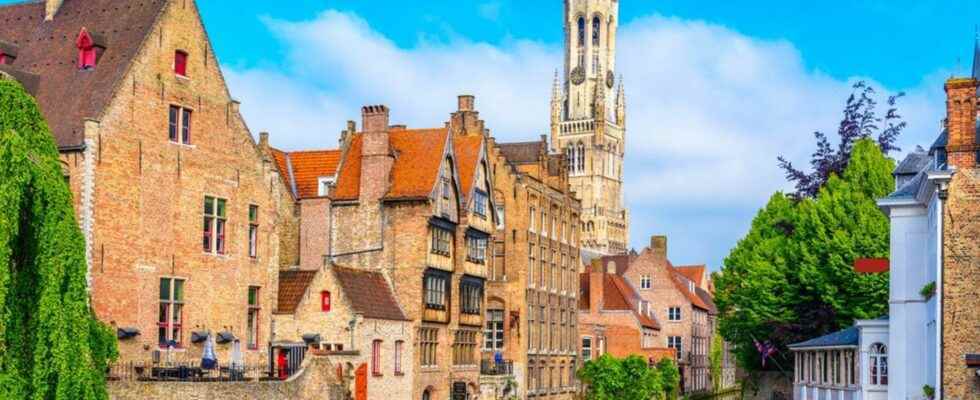Bruges
The most beautiful corners of the picturesque city
Bruges is best explored by boat.
© 2019 Catarina Belova/Shutterstock.com
Picturesque canals and medieval houses: Bruges is the perfect destination for a city trip. These are the highlights of the city.
Bruges, the capital of the Belgian province of West Flanders, was declared a World Heritage Site by Unesco in 2000. Its history dates back to the 9th century. Due to its favorable location and the connection to the sea, the city developed into a busy commercial city as early as the early Middle Ages. Since it was spared from destruction by wars or large-scale fires, the medieval townscape and historical buildings are still well preserved and invite you to an exciting tour of discovery.
Rozenhoedkaai
Rozenhoedkaai (Rosary Quay) is a popular starting point for exploring Bruges’ old town. According to medieval history, rosaries were sold in this square for a long time. Today, visitors enjoy the magnificent panorama with a good view of the back of the Basilica of the Holy Blood, the city’s magnificent City Hall and Bruges’ most famous tower…
Marketplace and Belfry
A visit to the belfry is a good way to get an overview of the medieval townscape and the many historical buildings. The 83 meter high tower can be climbed by 366 steps. Once at the top, the Grote Markt stretches out directly in front of the tower. The large market square used to serve as an important center of the former trading town, today there are mainly bars, cafes and souvenir shops on all sides of the square.
canals
The numerous canals have been the connecting arteries of the city for centuries. In addition to a walk through the alleys, the canals and adjacent picturesque houses can be explored particularly well by boat. In several places in the city center, shipping companies offer tours. The small, open boats sail through the canals in about half an hour. After every bend, a new view of the city and its most beautiful buildings opens up again. For example, the Jan van Eyckplein (Jan van Eyck Square) with its statue of the Bruges painter of the same name can be seen well from the water.
beguinage
When walking through the old town, it is worth making a detour to the Beguinage. For a long time, beguines, i.e. single women who led a religious life away from monasteries and religious orders, lived in this gem, which was created at the beginning of the 13th century. Today the Beguinage is inhabited by sisters of the Benedictine order and single women from Bruges. Its garden with the whitewashed houses is a place of tranquility and invites you to linger. After leaving the courtyard, it is worth walking across the bridge with Bruges’ former lock house (Sluishuis). From there you have a clear view of Lake Minnewater, which used to be the city’s reservoir, and the adjacent castle, Kasteel de la Faille.
Beer Wall
Bruges is all about Belgian beer culture. This is best seen on the so-called Beer Wall near the market square. Over 1,000 beers and matching glasses are displayed in shop windows in the passage. In the adjoining bar, which offers a terrace with a view of the city, all sorts of varieties can then be tried. Those interested in the culture of liquid gold should also visit a local brewery. De Halve Maan is the oldest city brewery in Bruges, which can be visited along with the beer museum. At the entrance to the building in the city center, visitors should look down: there, through a transparent pane, you can see part of the beer pipeline through which the brewery has been sending its beer to be bottled outside the historic city center since 2016. When it comes to culinary delights, Bruges explorers should not miss the traditional Belgian waffles, fries and chocolate specialties that can be bought on every corner of the city.
